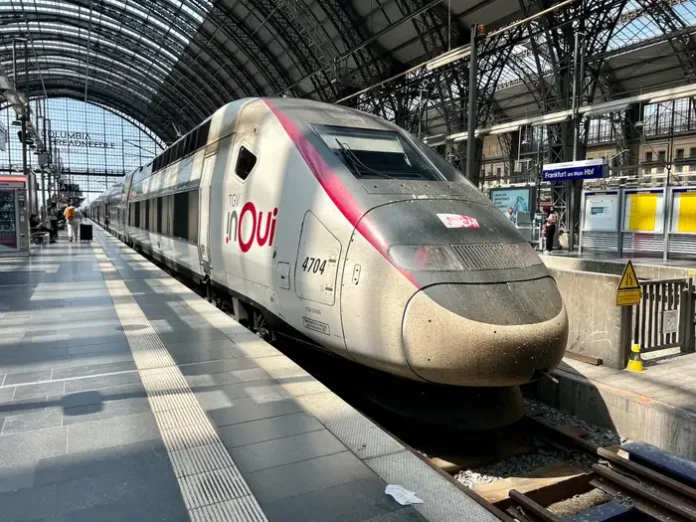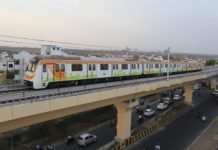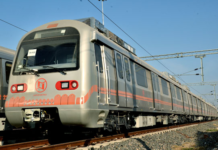1. Introduction
The evolution of trains has undergone massive changes, beginning in the 1550s with wooden wagonways in Germany, which evolved into iron rail tramways for transporting goods. The first steam locomotive, Richard Trevithick’s Puffing Devil, emerged in 1804, followed by George Stephenson’s Rocket in 1829, which reached speeds of 48 km/h (30 mph) and set standards for future locomotives. The establishment of the Liverpool and Manchester Railway in 1830 was the beginning of extensive railway networks, fueling economic growth in the 19th century. The transition to diesel and electric trains in the early 20th century improved operational efficiency, while Japan’s Shinkansen, introduced in 1964, pioneered high-speed rail travel.
Today, the integration of the Internet of Things (IoT) is transforming railways, creating smart trains and connected railway systems. These innovations enable real-time data exchange between trains, tracks, and control centres, enhancing operational efficiency, safety, and passenger experience.
This article will explore the potential of smart trains to transform mobility within the railway sector while creating a more connected ecosystem that enhances efficiency, safety, and passenger experience.
SMART Trains
Smart trains are developed through the integration of advanced embedded systems, onboard sensors, and communication modules that facilitate real-time data collection, transmission, and analysis. These sensors monitor critical train components, including wheel temperature, vibration levels, engine performance, and braking systems. The data collected is relayed to a central control centre, enabling continuous assessment and optimisation of operational parameters.

Smart Trains: Key Specifications and Features
Smart trains use advanced technologies that enhance safety, operational efficiency, and passenger experience. Below are the key specifications and features:
Key Specifications
Integrated Sensors:
Smart trains utilise modern sensor technologies to monitor both train compartments and track conditions. For instance, Self-Power Harvesting Sensors are deployed to assess wheel conditions and track integrity, transmitting alerts to control rooms when defects are detected.
Real-Time Monitoring:
Automatic Train Protection (ATP) systems continuously monitor train speeds in relation to allowable limits, which ensures compliance with safety regulations. Additionally, pantograph monitoring systems detect vibrations and capture video footage of any anomalies, further enhancing operational safety.
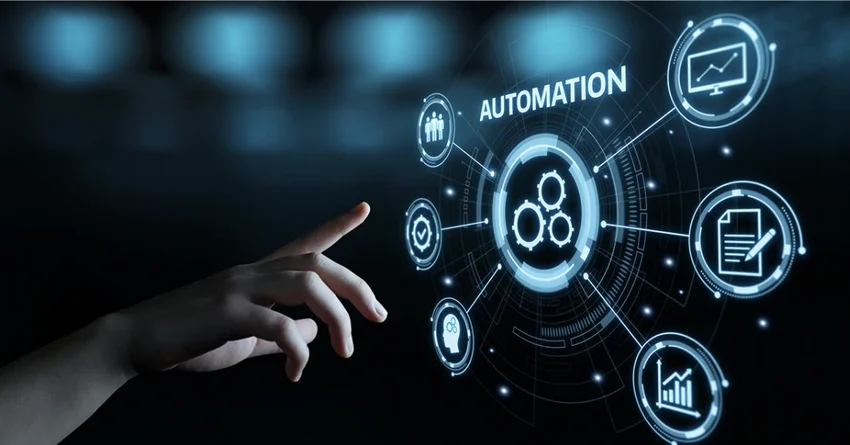
Passenger Information Systems:
Each smart coach is equipped with Passenger Information and Coaching Computing Units (PICCU), which deliver real-time updates on train locations, speeds, and next-station arrivals. This system enhances the passenger experience by ensuring travellers are well-informed throughout their journey.
Communication Technology:
The integration of 5G connectivity enables rapid data transmission between trains and control centres. This technology facilitates quicker emergency response times and enhances overall operational efficiency by synchronising previously fragmented information streams.
AI Integration:
Artificial Intelligence is employed for predictive maintenance through systems like the MiAIOT Train Protecting Monitoring System (MTPMS). This system can forecast equipment failures minutes before they occur, enabling proactive maintenance measures.
| Case Study: In Taiwan, the MiAIOT Train Protecting Monitoring System (MTPMS) employs AI and 5G technology to provide real-time alerts to train drivers and control centres, which improves incident response times by up to 98%. |
Safety Features:
Smart trains are equipped with AI-enabled CCTV cameras for enhanced security monitoring within coaches. These systems can detect suspicious activities and retain footage for up to 30 days for further analysis.
Environmental Considerations & monitoring:
Clean Diesel Engine Technology: SMART trains utilise EPA Tier 4 compliant diesel engines equipped with selective catalytic reduction (SCR) systems. These engines reduce nitrogen oxides (NOx) and particulate matter emissions, thereby optimizing fuel efficiency and adhering to stringent environmental standards.
Advanced sensors are employed to monitor environmental conditions within the train, including air conditioning performance and water levels, ensuring passenger comfort and optimal operational efficiency.
Emergency Communication:
Smart coaches feature a Talkback System that allows passengers to communicate directly with train staff in emergencies, thereby improving safety protocols and response times.
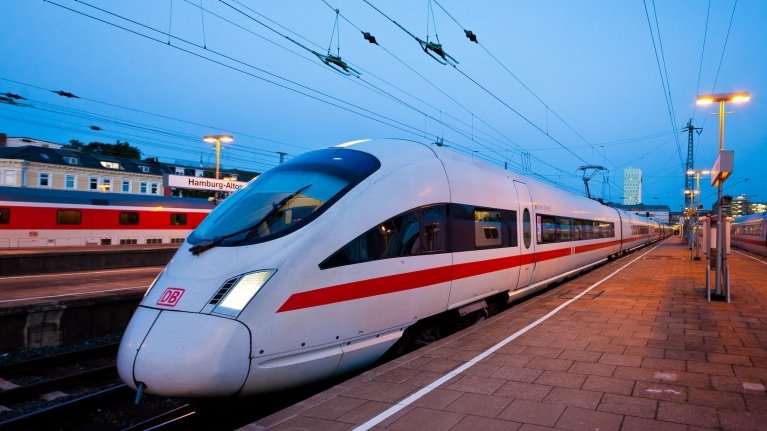
Benefits of Smart Trains
Improved Efficiency
- Automated Systems: Smart trains employ automation for scheduling, tracking, and maintenance, resulting in more efficient operations and reduced delays.
- Predictive Maintenance: Advanced analytics predict equipment failures before they occur, allowing for proactive maintenance and minimising downtime.
Enhanced Safety and Security
- Positive Train Control (PTC): This technology helps prevent collisions and ensures trains operate within safe speed limits, significantly reducing accidents.
- Real-Time Monitoring: Continuous monitoring of train components (like brakes and wheels) via onboard sensors allows for early detection of faults, reducing maintenance-related incidents.
Passenger Comfort and Experience
- Real-Time Information Systems: Passengers receive updates on train schedules, delays, and next station arrivals, enhancing their travel experience.
- Enhanced Amenities: Smart trains offer modern facilities, including Wi-Fi, spacious seating, and onboard services, improving overall passenger satisfaction.
Environmental Sustainability
- Energy Efficiency: Smart trains use energy-efficient technologies, such as regenerative braking and clean diesel engines, reducing overall carbon emissions.
- Reduced Congestion: By providing efficient rail alternatives, smart trains can help alleviate highway traffic congestion.
Economic Growth
- Boost to Local Economies: Improved rail connectivity enhances trade, tourism, and local business, contributing to regional economic development.
- Job Creation: Implementing smart trains increases job opportunities in technology, engineering, and service sectors.
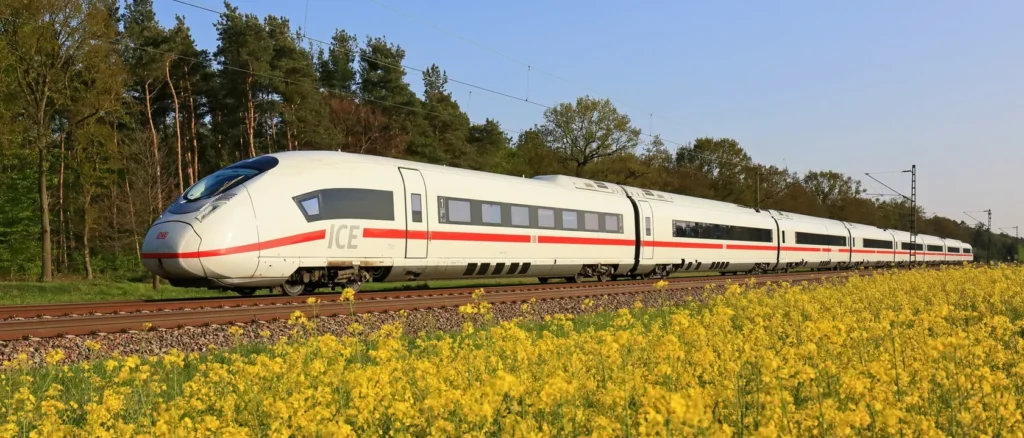
Challenges of Smart Trains
Infrastructure Limitations
- Ageing Rail Network: India’s existing rail infrastructure may require upgrades to support smart technologies, leading to high costs and extended timelines.
High Initial Investment
- Capital Costs: Implementing smart technologies requires substantial initial investments in equipment, technology, and training.
- Funding and Financial Viability: Securing funds and ensuring the financial sustainability of smart train projects can be challenging, especially in a price-sensitive market.
Technical Integration
- Compatibility with Traditional Systems: Integrating new technologies with existing systems and processes can lead to technical challenges and operational disruptions.
- Cybersecurity Risks: As trains become more connected, they face increased risks of cyberattacks, necessitating robust security measures to protect sensitive data.
Case Study: Smart Trains in India and Around the World
1. India: Vande Bharat Express (Train 18)
Overview: The Vande Bharat Express, also known as Train 18, is a semi-high-speed train introduced by Indian Railways in 2019.

Key Features:
- Advanced Safety Systems:
- Train Collision Avoidance System (TCAS): Automatically prevents collisions by monitoring speed and position.
- Fire Detection and Alarm System (FDAS): Alerts crew and passengers in case of fire.
- Real-Time Monitoring:
- Onboard sensors track parameters such as wheel temperature and vibrations, sending alerts for preventive maintenance.

- Passenger Comfort:
- Ergonomically designed interiors with automatic doors and spacious seating.
- Real-time updates via the Passenger Information System (PIS).
- Energy Efficiency:
- Regenerative Braking System: Recovers energy during braking.
- Lightweight construction using aluminium.
2. Japan: Shinkansen (Bullet Train)
Overview: Japan’s Shinkansen, operational since 1964, is renowned for its punctuality and speed. It has set a global standard for high-speed rail.
Key Features:
- Maglev Technology:
- Some Shinkansen lines use magnetic levitation, which allows speeds exceeding 600 km/h (373 mph) with minimal friction.
- Advanced Safety Systems:
- Automatic Train Control (ATC): Monitors train speed and position
3. Germany: ICE (InterCity Express)
Overview: The ICE is Germany’s high-speed train service, connecting major cities at speeds of up to 300 km/h (186 mph).
Key Features:
- Advanced Monitoring Systems:
- Equipped with sensors that monitor train conditions in real-time, facilitating predictive maintenance.
- Wi-Fi Connectivity:
- Offers onboard internet services, enhancing passenger experience.
- Energy Efficiency:
- Utilises energy-efficient designs and regenerative braking systems.
4. France: TGV (Train à Grande Vitesse)
Overview: The TGV is France’s high-speed train system, and it has been operational since 1981. It is known for its speed and efficiency and connects major cities across France and neighbouring countries.

Key Features:
- High-Speed Technology:
- The TGV, capable of speeds exceeding 300 km/h (186 mph), has established a high-speed rail network that is among the best in the world.
- Smart Infrastructure:
- Integrated with advanced signalling and communication systems for real-time train tracking and safety.
Future Trends
The integration of technologies such as Maglev (magnetic levitation) systems enables trains to achieve speeds exceeding 431 km/h with minimal friction. Additionally, concepts like Hyperloop are gearing up to transform rail transport by facilitating ultra-fast travel within low-pressure tubes.
IoT: Transforming Railways
IoT: The Internet of Things refers to a network of interconnected devices (sensors, actuators, controllers) that collect and share data over a cloud-based platform. In railways, IoT integrates various components, such as tracks, stations, trains, and signalling systems, for real-time monitoring and communication.
IoT Architecture in Railways:
Edge Devices and Sensors: These are the critical components of the IoT ecosystem. IoT devices (sensors, RFID tags, GPS trackers) collect data from various sources—track health, train speed, engine performance, braking force, and environmental conditions. Sensors are placed at critical locations, such as axles, brakes, and track joints, to gather data and send it to cloud platforms via local networks for processing and decision-making.
Network Connectivity: Connectivity is at the core of IoT systems in railways. Trains, stations, and control centres communicate using wireless networks such as 4G, 5G, LTE, and specialised railway communication systems (like GSM-R). High-speed 5G networks enable real-time data transfer, allowing instant feedback and remote control of train functions.
Data Collection & Analytics: Massive amounts of data are collected from sensors across the network and transmitted to cloud-based platforms where analytics engines powered by AI and machine learning algorithms analyse the data for actionable insights. For example, predictive maintenance algorithms can analyse temperature data from wheels and bearings to predict potential failures.
- Technical Aspects of IoT:
- Sensors: Devices like accelerometers, gyroscopes, strain gauges, and thermocouples are used to measure physical properties such as vibration, acceleration, and temperature. These sensors continuously monitor conditions like track integrity, wear on train components, and environmental factors (e.g., humidity affecting track expansion).
- RFID (Radio-Frequency Identification): RFID tags are used for tracking inventory, including train parts and maintenance tools. They can also track passenger movement at stations, enabling a smooth flow of passengers through entry and exit points.
- Communication Networks: The backbone of IoT systems in railways includes private, secure networks that enable low-latency, high-speed data transfer. 5G allows for ultra-reliable low-latency communication (URLLC), which is necessary for safety-critical applications like signalling and train control.
3. Key Applications of IoT in Railways
1. Predictive Maintenance:
- Technical Insight: Predictive maintenance relies on condition monitoring sensors that continuously assess the health of various components, such as engines, wheels, and tracks. These sensors measure parameters like vibration, noise, and temperature. The data is then fed into an AI model that uses historical data to predict failures. This eliminates the need for scheduled inspections, allowing for repairs to be made only when necessary, saving on maintenance costs and avoiding unplanned downtime.
- Ultrasonic Sensors: For example, ultrasonic sensors are installed on rails to detect invisible cracks or deformities to the naked eye, allowing for early detection of potential hazards before they lead to accidents.
| Example: The German ICE 4 high-speed trains employ an IoT-based predictive maintenance system where sensors installed on the axles, brakes, and wheels collect data on vibrations and mechanical stress. |
2. Smart Traffic Management:
- Technical Insight: IoT-based traffic management uses Vehicle-to-Infrastructure (V2I) communication where the train’s position, speed, and other vital statistics are transmitted to the control center in real-time. Interlocking Systems connected to IoT allow for automatic switching of tracks based on real-time data, preventing conflicts between trains and optimising the use of the network. Advanced control systems can adapt to traffic conditions dynamically and re-route trains automatically if delays or blockages occur.
- Digital Twin Technology: A digital twin is a real-time virtual model of the railway network that mirrors the physical system’s status. IoT sensors and edge computing feed real-time data into this model, allowing operators to simulate different traffic scenarios and optimize routing and scheduling decisions based on real-time data.
| Example: The Japanese Shinkansen (bullet trains) use IoT-based control systems to monitor traffic across hundreds of kilometres. Sensors on the tracks and communication systems in trains transmit real-time data to the central control system, which automatically adjust train speeds or reroute them based on current traffic conditions, ensuring trains run punctually and safely. |
3. Enhanced Passenger Experience:
- Real-Time Information: Real-time passenger information systems utilise GPS, sensors, and wireless communication to provide live updates to passengers via apps and station screens. Passengers can get real-time data on train arrival and departure, delays, and seat availability. The system can also provide personalized updates through mobile apps based on passengers’ ticketing data.
| Example: China’s Fuxing high-speed trains offer real-time train status updates via a mobile app that uses IoT sensors embedded in the train. |
- Smart Ticketing: IoT enables contactless payment solutions using RFID cards, mobile apps, or NFC-based payment systems. These solutions reduce congestion at ticket counters and gates. Additionally, IoT systems can track passenger flow through sensors at station entrances and exits, allowing operators to optimize train frequencies based on demand.
4. Energy Efficiency & Sustainability:
- Technical Insight: IoT sensors installed on trains monitor energy consumption by tracking real-time power usage for propulsion, lighting, heating, ventilation, and air conditioning (HVAC) systems. Smart meters measure the electricity consumed at different points, providing insights into how energy can be saved. Regenerative braking systems, which allow trains to capture kinetic energy during braking and feed it back into the grid, are another IoT-based application that improves energy efficiency.
| Example: The Siemens Velaro Novo trains are designed to be 30% more energy-efficient than their predecessors, thanks to IoT sensors that monitor and optimise the train’s energy use based on real-time data |
- Dynamic Power Management: By integrating IoT with energy management systems, power usage can be dynamically adjusted based on real-time conditions. For example, if the system detects that a train is traveling downhill, it can reduce the engine’s power output and engage regenerative braking, saving energy.
4. Safety and Security in Connected Railways
IoT-enabled Safety Systems:
- Technical Insight: Advanced IoT-enabled systems like the Kavach system use GPS, onboard sensors, and wireless communication to monitor train locations, speed, and signal status. In case of potential collisions, the system sends automatic signals to slow down or stop the train. Similarly, IoT-enabled Positive Train Control (PTC) systems, used in Western rail networks, automatically enforce speed restrictions and prevent collisions by comparing real-time train data with pre-set safety parameters.
- Obstacle Detection: IoT-based systems, including LiDAR and cameras installed on the front of the train, detect obstacles on the tracks, while V2I communication warns the driver of potential collisions. Autonomous emergency braking can be activated in case the driver fails to respond.
Cybersecurity Concerns:
- Technical Insight: With IoT, cybersecurity becomes a critical concern. IoT systems in railways require robust end-to-end encryption (using protocols like SSL/TLS) to ensure that data from train sensors to the control center remains secure. Firewall systems, intrusion detection systems (IDS), and AI-powered threat detection systems can monitor for unusual network activity and isolate compromised components to prevent cyberattacks on critical railway infrastructure.
- Access Control: Role-based access control (RBAC) systems ensure that only authorized personnel can access IoT systems and critical operational data. Using blockchain technology for maintaining secure and immutable logs of operations is another evolving approach to enhance security.
5. Case Studies of IoT Implementation in Railways
1. Indian Railways:
- Kavach (Train Protection): This IoT-based signaling and control system in Indian Railways prevents train collisions by automatically controlling the train’s speed and movements based on real-time signals received from the control center. It also integrates GPS-based location tracking to continuously monitor train positions.
- Asset Monitoring: Indian Railways has implemented IoT for monitoring track conditions and train components like axles, bearings, and brakes. Data is analyzed to predict potential failures and schedule maintenance, enhancing operational safety and efficiency.
2. European Railways:
- Predictive Maintenance: In the UK, IoT systems monitor track integrity using accelerometers and gyroscopes, which measure track vibrations and forces. Algorithms predict when parts of the track are likely to fail, preventing derailments and reducing downtime.
- ERTMS (European Rail Traffic Management System): The ERTMS eliminates trackside signals by introducing in-cab signaling, where trains receive movement instructions directly from the control center based on real-time data. This increases line capacity and allows trains to operate more closely together without sacrificing safety.
3. High-Speed Rail Systems (Japan/China):
- Smart Traffic Management in China: China’s high-speed rail uses IoT to manage its massive network of trains, ensuring that hundreds of trains operate efficiently across long distances. Automated scheduling systems based on real-time demand and track conditions improve operational efficiency and minimize delays.
6. Benefits of IoT in Railways
Operational Efficiency:
- IoT reduces human intervention by automating scheduling, signaling, and maintenance, which cuts down on delays and enhances train punctuality.
Cost Savings:
- IoT lowers the costs associated with unscheduled repairs and downtime by reducing breakdowns and enabling predictive maintenance.
Passenger Satisfaction:
- Real-time updates, improved services (like Wi-Fi), and smart ticketing systems lead to smoother journeys and increased satisfaction.
7. Challenges in IoT Adoption in Railways
High Investment:
Implementing IoT infrastructure involves the cost of sensors, communication networks, and backend data analytics systems.
Integration with existing Systems:
Indian rail systems still use legacy infrastructure that may not be compatible with IoT solutions. Upgrading or integrating older systems requires time and resources.
Data Management and Security:
Managing large volumes of data generated by IoT devices is challenging. Storage, analysis, and ensuring data integrity are major technical hurdles. Data Encryption and secure access control are vital to protect sensitive operational and passenger data from cyber threats.
8. Future of IoT in Railways
IoT is setting up the ground for autonomous trains where AI-driven systems handle driving, monitoring, and safety operations without human intervention.
AI and Machine Learning will be integral to advanced predictive maintenance, enabling rail operators to forecast component failures months in advance with greater accuracy.
Conclusion
The advancement of smart trains outlines a meaningful enhancement in operational efficiency, safety, and passenger experience within the railway industry. The incorporation of technologies such as Artificial Intelligence (AI), the Internet of Things (IoT), and 5G connectivity is creating a more responsive railway ecosystem. Smart coaches in Indian Railways, equipped with sensors for real-time diagnostics and passenger information systems, demonstrate practical implementations of these developments. While challenges such as the higher costs of implementing these technologies and integration with existing systems persist, advancements like Maglev and Hyperloop hold the potential to further enhance rail travel by offering faster and more efficient transportation alternatives.


